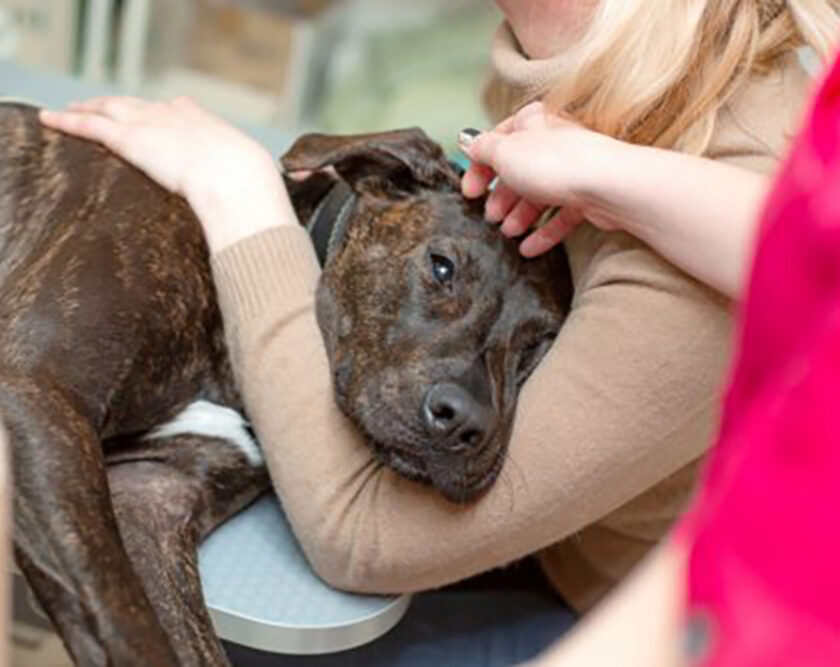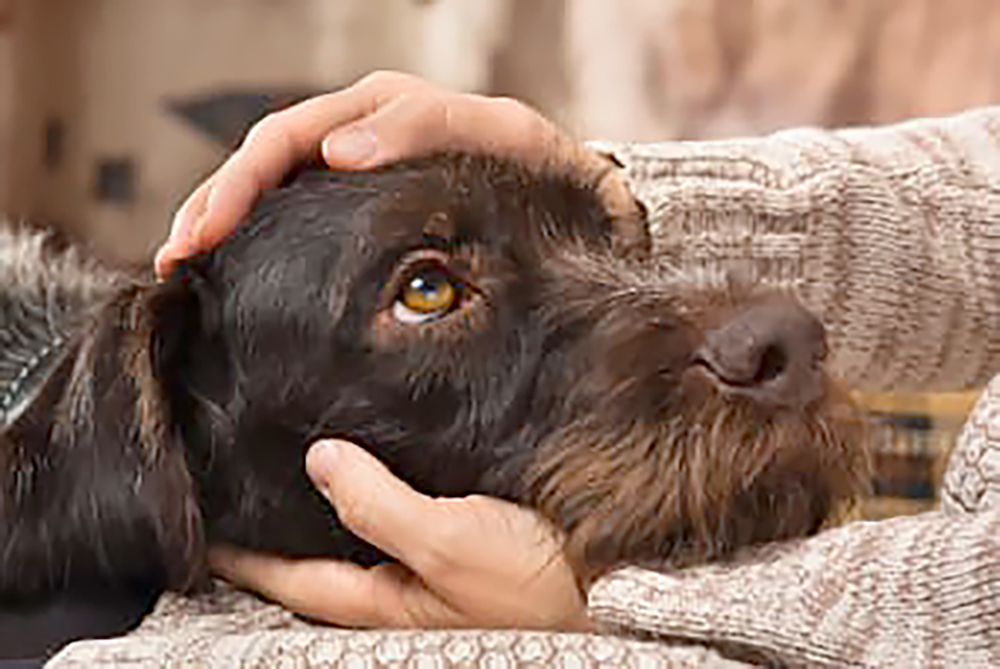By Heidi Clayton
At some point in every dog owner’s life, you will be faced with your dog having an unpleasant bout of diarrhea. Frequently referred to as the “runs,” it can gross even the sturdiest of dog owners out. Depending on the cause, it could be absolutely nothing at all or quite serious. I always understand why it causes concern among dog owners.
The most common causes of diarrhea are dietary indiscretions. A big one in my house is the constant consumption of acorns and leaves during the fall. While dogs’ stomach acids are about three times as strong as our own, my dogs tend to have bouts of diarrhea when they overindulge in acorns and leaves. Other common causes are diet changes, food intolerances, parasites (such as roundworm, coccidia, or the very common giardia,) viruses (such as parvo or distemper,) bacterial infections, stress, or ingesting a foreign body.

Most of the time, diarrhea will resolve itself. How you treat it and when to go to the vet varies from dog to dog. As gross as this is, when a client asks me if they should worry, I always ask what color is the diarrhea and what is the consistency. Are there small white rice-like objects in the stool? If so, your dog could have a parasite and that is a trip to the vet. Anything green, orange-tinted, or gray could mean trouble with the dog’s liver, gallbladder, or pancreas. Black tarry stool or black tarry stool with bright red blood could be a sign of internal bleeding. It could also be a result of your dog straining to go. For me, bloody stool might not be an emergency vet visit depending on the amount of blood, but I usually do like to get them seen if it is persistently present.
I also tell everyone that you should always go to the vet if you are worried. Even if the visit result is that your dog most likely got into something like grass, sticks, or leaves, for some, knowing that there is no problem puts them at ease. I suggest a vet visit when, along with diarrhea, there are other symptoms like a fever, vomiting, pale gums, weakness, dehydration, or if your dog just seems off to you. I am much quicker to go to the vet with baby puppies or my old dogs than with the young to middle-aged ones who eat grass and leaves like they are goats.
If you choose to try home remedies first, I usually start with fasting my dogs for about 8 hours and then offer a small meal. I personally do not give my dogs boiled or bland chicken but opt for feeding them white rice with either fermented kefir, pumpkin puree (not pumpkin pie mix!), or plain yogurt mixed in. I also keep Pepcid Original Strength tablets on hand, which do not require a vet’s prescription. Pepcid, also known as Famotidine, should not be given with food but works best on an empty stomach. Along with Pepcid, I have Metronidazole that my vet prescribed and will give if the diarrhea lasts longer than 12 hours.
Diarrhea is one of the unpleasant realities of dog ownership. Never panic if your dog has it and use the above checklist to determine if you should go to a vet.
If you have questions, please feel free to email me at heidi@fouronthefloordogtraining.net.
Heidi Clayton started Four On the Floor Dog Training to provide positive, reward-based dog training in South Jersey. She breeds, trains and shows bull terriers under the SoraBully’s Bull Terriers kennel name. Email questions to heidi@fouronthefloordogtraining.net or learn more at https://fouronthefloordogtraining.net










